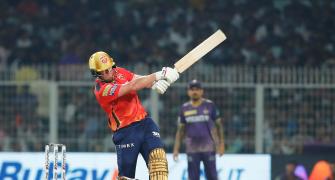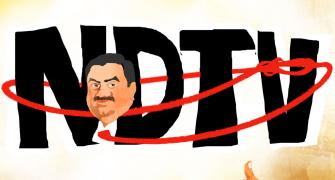Even after the sharp drop in commodity prices over the past few months, corporate profitability has remained rather low, suggesting that demand is still slack.
 The Reserve Bank of India (RBI) is scheduled to make its first policy statement of the new fiscal year on April 7.
The Reserve Bank of India (RBI) is scheduled to make its first policy statement of the new fiscal year on April 7.
Having already cut the policy rate twice over the past three months, both actions coming outside the schedule of meetings, expectations about what it will do next week appear to be mixed.
This is partly based on the perception that the 25-basis-point reduction immediately after the presentation of the Union Budget was simply bringing forward the cut that would have been made next week.
Having done this, the argument goes, the RBI will not see the necessity of further cuts until there is firmer evidence of inflation softening in a sustained way.
However, there is also a significant counter-view, which sees enough justification for continuing to cut the rate amid the still relatively sluggish industrial production, credit and tax revenue growth numbers. What should the RBI do?
Significantly, after the last cut in early March, inflation risks seem to have heightened somewhat.
Rather worrisome developments in West Asia have already begun to exert upward pressure on crude oil prices and there is no telling how quickly and by how much the situation will deteriorate.
A spike in the price of crude oil would unquestionably have an adverse impact on three key macroeconomic indicators - inflation, the current account deficit and the fiscal deficit.
If the likelihood of such an outcome is reasonable and oil prices remain high for a while as a result, a rate cut might prove to be premature, particularly in terms of the new inflation-targeting framework that is now in place.
There are risks beyond oil as well. Widespread unseasonal rainfall has adversely impacted many standing crops across the country.
While wheat prices can be managed by selling down from stocks, other crops, particularly vegetables, could contribute to an inflationary spike.
Whether this is sustained or not will, in turn, depend on the monsoon. Monetary prudence would indicate that, in the face of these two risk factors, further cuts should wait until there is greater visibility of the underlying forces.
On the other hand, while these are certainly risks, they may not result in a significant and sustained increase in inflation beyond the current year’s target of six per cent consumer inflation. Meanwhile, the new gross domestic product (GDP) numbers notwithstanding, economic activity is still very sluggish.
Even after the sharp drop in commodity prices over the past few months, corporate profitability has remained rather low, suggesting that demand is still slack.
Bank credit is growing at a frighteningly low rate of around eight per cent, indicating that there are no takers for loans at least at current interest rates.
Given this situation, the RBI could be argued to have a fair amount of space to cut rates without compromising on its inflation mandate.
In fact, there is an argument to be made for front-loading cuts to provide stimulus as quickly as possible.
The decision for April 7 is being made on the horns of a recurring dilemma. The choice must be made on the balance of probabilities.
The threats to inflation are probable, while the sluggishness in growth is visible in all indicators but the GDP numbers. The RBI must respond to the latter.








